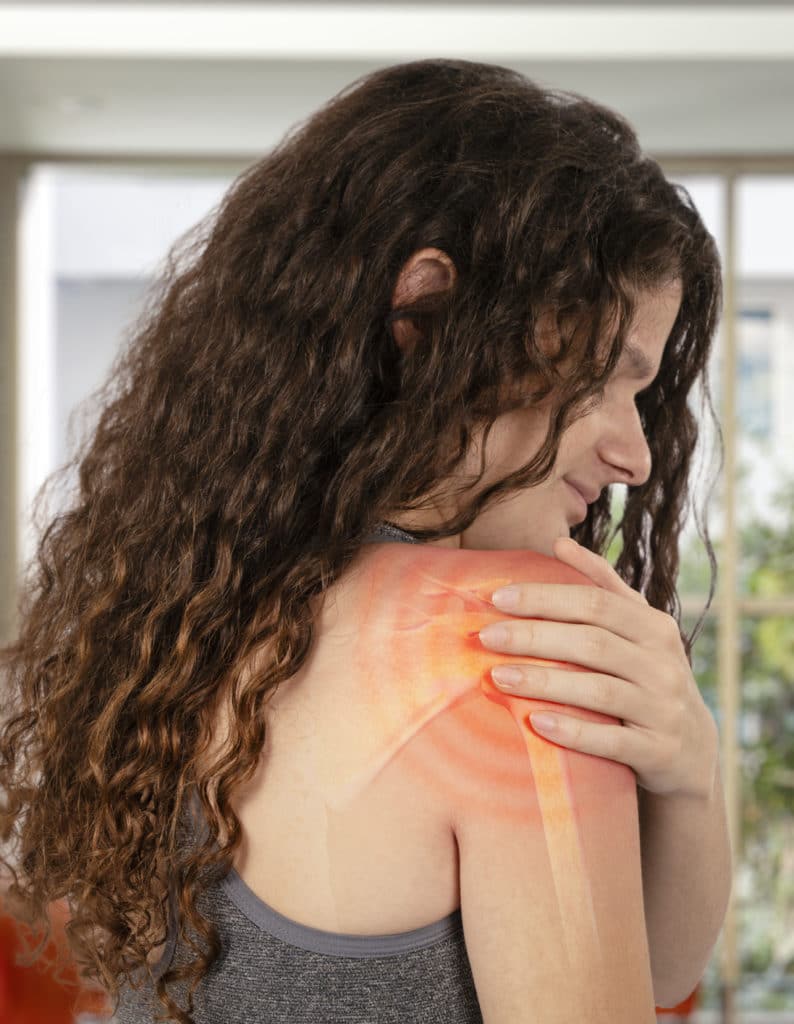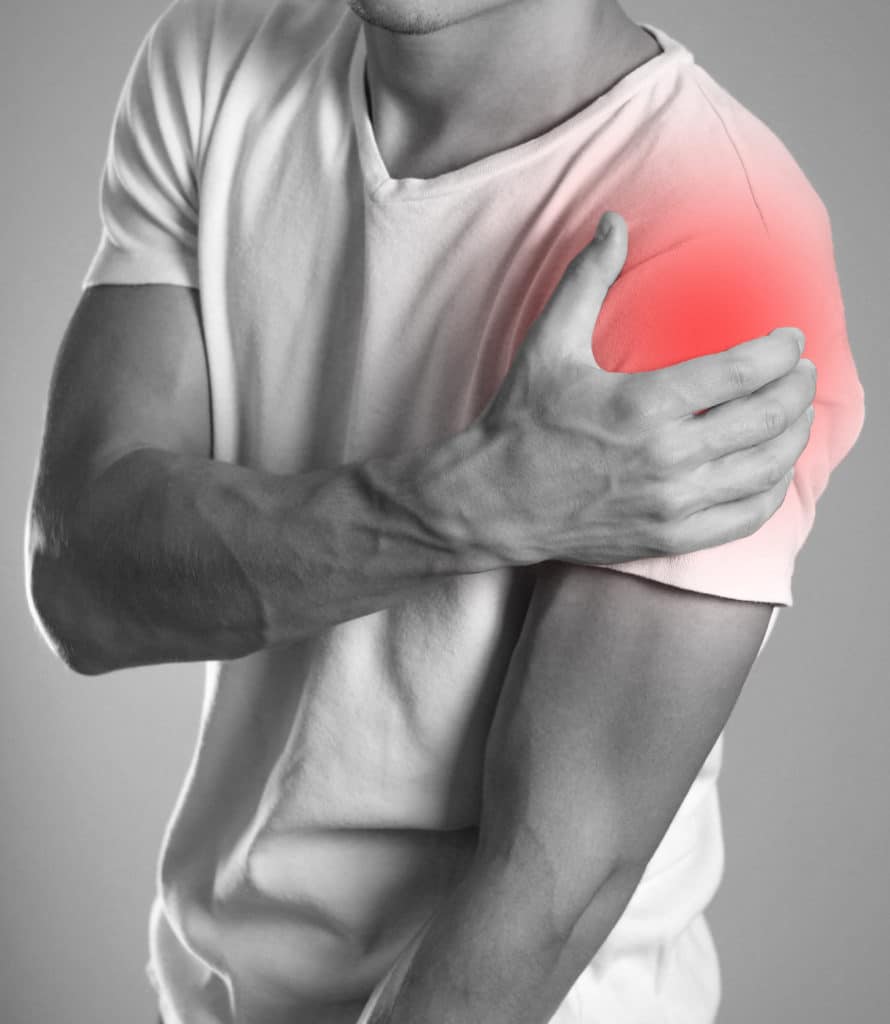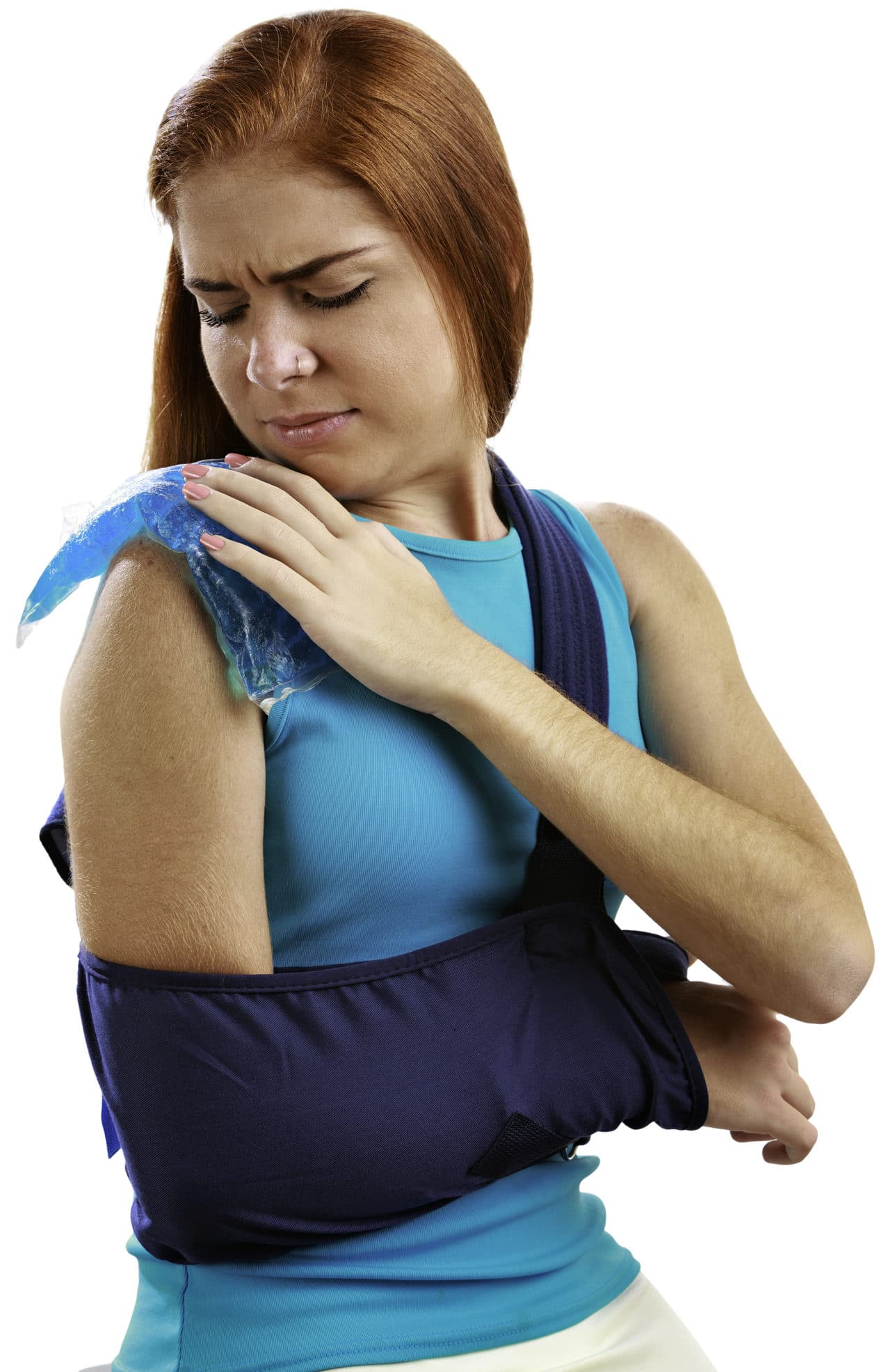If you’ve ever played competitive baseball or softball, you probably know someone who has had issues with his rotator cuff. The rotator cuff consists of four muscles and tendons whose job is to pull and maintain the ball of the upper arm bone, the humerus, into the center of the shoulder joint. This pull and tension from the rotator cuff makes it possible to perform a whole range of complicated arm movements that would otherwise cause the head of the humerus to dislodge from the socket.
But the rotator cuff is prone to wear and tear with years of use. It is also susceptible to acute injury. A rotator cuff tear results in pain, limits shoulder mobility, and sends over two million Americans to the doctor yearly in search of help. A torn rotator cuff weakens the shoulder and impinges on everything from serving a throwing a ball to reaching up into a cabinet.

At Summit Healthcare Orthopedics, Dr. Brimhall has extensive experience diagnosing, treating, and, if necessary, surgically repairing rotator cuff tears.
What is a rotator cuff tear?
Of the four muscles and tendons that connect the humerus to the scapula, the supraspinatus is the most susceptible to injury, as it attaches the top of the humerus to the scapula and receives heavy stress. When one the rotator cuff tendons are torn the tendon no longer completely attaches to the head of the humerus.
These rotator cuff injuries are graded as to severity:
- Grade 1 — This stretches the fibers without a physical tear. A strain.
- Grade 2 — This is a partial tear, but the tendon is not completely severed.
- Grade 3 — This is a full-thickness tear that creates a hole through the tendon, splitting the soft tissue into two pieces.
Causes of a Rotator Cuff Tear
While we see patients at Summit Healthcare Orthopedics who have had an acute rotator cuff tear as a part of a shoulder dislocation or maybe after putting their arm out to break a fall, these tears are more typically the result of years and years of use and progressive degeneration. Here are typical causes of rotator cuff tears:
- Repetitive use — Think of sports where your arm is used above your head, and they will correspond to rotator cuff injury: baseball, softball, tennis, volleyball, rowing, swimming, and weightlifting. These repetitive shoulder motions with your arm above your head stress the rotator cuff. Jobs such as painting and carpentry produce the same stresses.
- Age — Rotator cuff tears are most common in people over 40. Over time, the tendons in the rotator cuff are slightly damaged (but not torn) and repair themselves, but as we age the blood supply to the areas decreases, lessening the repair function.
- Weaker muscles and poor posture — Sedentary lifestyles and chronic poor posture increase the chances of cuff tears.
- Bone spurs — Bone spurs can develop on the underside of the acromion bone (part of the scapula), especially in people with arthritis. When the arm is lifted these spurs rub on the rotator cuff’s supraspinatus tendon and weaken it over time.
Symptoms of a Rotator Cuff Tear
Rotator cuff tears can sometimes be confused with partial separations of the shoulder joint. But a separation will be painful due to the stretching of separation and it will be painful at all times as it heals. If you have a tear in your rotator cuff, you will have persistent pain, tenderness, weakness, but most pain will accompany movements such as reaching directly above your head, reaching behind your back, and during lifting motions involving your shoulder. Something like shampooing your hair will become very painful. Over time, you will feel pain even when the shoulder is at rest, particularly when lying on your side in bed.
Acute tears are intensely painful and can be accompanied by a snapping sensation if the tendon has fully ruptured.

How will I know if I need rotator cuff surgery?
These decisions aren’t always cut and dried. Sure, if you have a full tear after a dislocation, you’ll need surgery immediately. There is also some misconception after these injuries. A grade 1 strain of a tendon can heal itself, but a tear of a rotator cuff tendon will not heal. People who don’t want to have surgery may find ways of working around their injury. Steroid injections can eliminate the pain, but the problem with all non-surgical options is that the shoulder will not strengthen again. It’s easy to turn a minor tear into a major tear by continuing to use the shoulder.
If you’ve tried some conservative measures, such as rest and maybe steroid injections, but they don’t seem to be having an effect and you’re dealing with pain when sleeping and doing routine, mundane tasks, it could be time to consider surgery with Dr. Brimhall at Summit Healthcare Orthopedic Center. Or, if your livelihood is at stake — if you’re a carpenter, for instance — you’ll need surgery to rebuild the strength you need in your shoulder.
These would be situations where surgery would be the best option:
- You have a large tear (over 3 mm)
- Your tear was caused by an acute injury
- You have a significant amount of weakness
- You have lost function in areas where you cannot tolerate it
- You have had significant pain for over six months
What happens if I don’t have surgery for a torn rotator cuff?
No one looks forward to surgery. As mentioned above, some people incorrectly assume that a torn rotator cuff can heal itself. This is not the case. Yes, you can avoid using the shoulder in the same way. For instance, you could give up tennis. But we use our shoulders so much more than to just serve a ball. Anything from grabbing a glass from an overhead shelf to paddling a canoe to waxing a car — the shoulder comes into play in just anything we do that involves the upper torso. Not addressing the problems with your rotator cuff will simply limit your lifestyle.
Surgical Options for a Torn Rotator Cuff Repair
Dr. Brimhall typically looks at three possible surgical techniques for rotator cuff repairs.
- Open repair
Large and complex tears, or if you require additional reconstruction such as a tendon transfer, will usually require open surgery with an incision stretching several centimeters. The incision is made over the shoulder and the deltoid muscle is detached to gain access to the rotator cuff. During open surgery, Dr. Brimhall also removes any bone spurs from under the acromion to minimize future rubbing on the tendon. If needed to gain more space for the rotator cuff, we may even remove part of the acromion. - All-arthroscopic repair
In an all-arthroscopic procedure, Dr. Brimhall inserts a small camera, an arthroscope, into the shoulder joint through a very small incision. The camera displays pictures on an adjacent television screen that then allow him to see the operating area without needing a larger incision. Since miniature surgical instruments are also used, this surgical option is the least invasive. - Mini-open repair
This procedure is a hybrid between open and arthroscopic methods. Here we use arthroscopy to assess and treat damage to other structures within the joint, issues such as bone spurs. Then, through the mini-open incision, usually 3 to 5 cm long, Dr. Brimhall will directly view and repair the rotator cuff. In the mini-open method the deltoid muscle is not detached.
Recovery After Rotator Cuff Surgery
Your recovery will be dictated to a degree by which method was used for your surgery. Regardless of the method we use, however, this is not a simple, quick recovery. Our entire team at Summit Healthcare Orthopedic Center is with you through this entire process to ensure your best final outcome.
With the open method, you’ll likely spend at least one night in the hospital.
Once home, there are no shortcuts here if you want a successful end result. Your dedication to rehabilitation will directly impact your return of motion and function in your repaired shoulder. Your rehabilitation will involve three steps:

- Immobilization — This first phase is meant to protect your surgically repaired tendon. You will wear a sling to keep your arm from moving, and will not be able to use it. The length of this phase depends on the severity of your tear, but will last from 4 to 6 weeks. It’s important to respect the injury and repair and to not place any stress on the shoulder during this time.
- Passive exercise — A physical therapist will help with this second phase, the goal being to strengthen the surrounding muscles and improve range of motion. This will begin sometime within the first 4 to 6 weeks after surgery. The therapist will generally support your arm, moving it in the desired directions.
- Active exercise — After 4 to 6 weeks, you will begin active exercises under the guidance of a therapist. Then at 8 to 12 weeks, you will shift to strengthening exercises.
Full recovery can take up to one year, with adequate strength and function coming somewhere between 4 to 6 months after surgery. It is important not to rush things with your recovery.
How will the pain be after rotator cuff surgery?
Most patients who have this surgery say it takes about nine months before your shoulder feels completely normal. With this kind of timeframe, you can expect some pain and soreness for several months after your surgery. Everyone heals at a different rate, and some tears simply need more time to heal. To try and eliminate as much stiffness as possible, we recommend patients focus on regaining motion in their fingers, wrist, elbow, and shoulder for the first three months in physical therapy.
Risks of Rotator Cuff Surgery
These are generally very successful procedures, but a small percentage of patients can experience possible complications beyond those that are a part of any surgery. They may include:
- Nerve injury — During surgery the nerve that activates your shoulder muscle can be damaged.
- Infection — Because the procedure involves working at depth in the shoulder, there is a possibility of infection, but we provide a course of antibiotics during and after to mitigate this.
- Deltoid detachment — If you’ve had an open repair, the deltoid muscle was detached to provide better access to the rotator cuff. This is then stitched back into place, but it is susceptible to detachment if used before it is fully healed.
- Stiffness — As mentioned above, Dr. Brimhall is a big fan of early focused rehabilitation on regaining motion, rather than regaining strength. This lessens ongoing stiffness.
- Tendon re-tear — There is always a risk of re-tearing of the tendon. This risk increases with the size of the initial tear.
